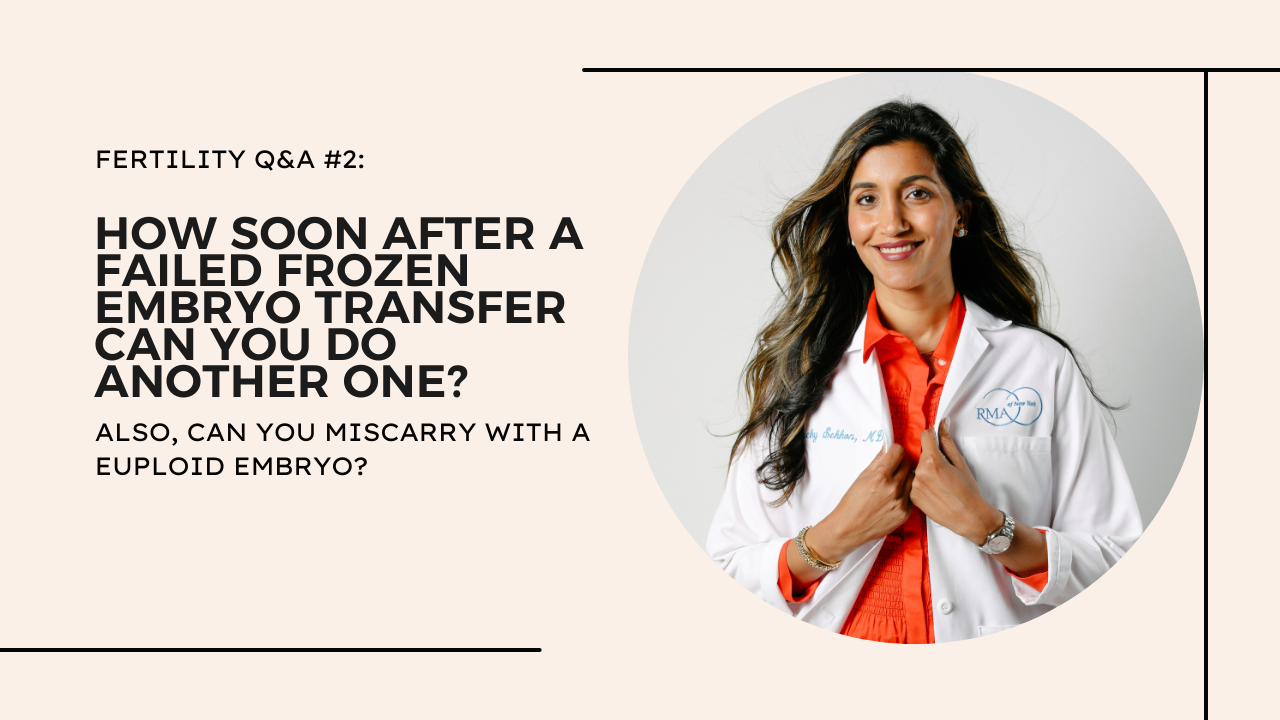Fertility Q&A #2: How Soon after a Failed Frozen Embryo Transfer Can You Do Another One?

This article is a round-up of a few of the interesting questions I got from my Instagram followers during my last Q&A session at the end of July 2023.
“How Soon after a Failed Frozen Embryo Transfer Can I Do Another Egg Retrieval to Make More Embryos?”
If an embryo transfer is not successful, you will be instructed to stop the medications you are taking (progesterone +/- estrogen) and you can expect to have a withdrawal bleed within 4-7 days. At that point, the hormones have left your system and the cycle is ‘reset’. It is usually at this point, I tell patients they can begin another cycle, whether it is another transfer or an egg retrieval cycle. There is no downside to starting another cycle right away, whether an embryo transfer or an egg retrieval. However, I always urge people to take a break if they need one for their mental health or if they want to take a physical break from the medications.
“Why would I still have a miscarriage with a euploid embryo?”
PGT normal embryos are often assumed to be 100% perfect. However, this is not the case. PGT involves doing genetic testing on a small number of cells biopsied from the outer part of the embryo (the part that one day becomes the placenta). Even in the best case scenario, I expect only ~60-70% of euploid embryos to implant and result in live birth. The third that don’t often don’t due to there still being issues with the embryo. The PGT test is not always going to reflect the true chromosomal content of the embryo, as only a small portion of the cells are being tested and embryos can be mosaic. The resolution of PGT is limited to ~5 million base pairs of DNA – so if there is smaller pieces of DNA that are missing or gained, this will not be detected by the most current technology for embryo testing. The majority if euploid embryos that don’t implant or stay implanted (aka end up miscarrying) because of genetic issues with the embryo or the embryo not being able to do what it needed to do (some of this could be bad luck or migrating to the wrong part of the cavity which is not conducive to implantation etc. Outside of the embryo, structural issues with the uterine cavity (polyps, fibroids, scar tissue) or infectious/inflammatory processes which involve the uterine cavity or the fallopian tubes (Hydrosalpinx) can interfere with continued implantation and growth of a pregnancy. It may be prudent to do focused testing after having recurrent losses, or even after a euploid pregnancy loss (as the #1 cause of miscarriage should have been ruled out). If blood clotting issues such as Antiphospholipid antibody syndrome were identified, the solution would be baby aspirin while trying to conceive and Lovenox (a more potent, injectable blood thinner) once pregnant.
My name is Lucky Sekhon and I'm a double board-certified OBGYN, and Reproductive Endocrinologist & Infertility specialist practicing at RMA of New York. My mission is to empower women with practical and scientifically accurate information to make the right fertility decisions for themselves.
Follow me on Instagram to keep up to date with my fertility related posts and content.

